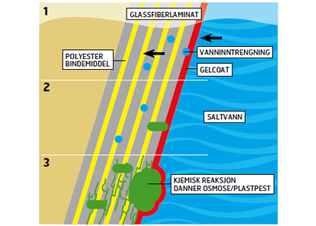I have seen this on a number of DA40/DA42 aircraft
In some cases the wing(s) had to be replaced as the only economical solution. It seems to happen out of warranty, mostly.
For an idea of scale, the “pip” spacing is of the order of 2cm.
If you were in Marketing you could sell it as a drag reducing measure 
acne ?
Composite boats sometimes have such problems and they call it “osmosis”. The prime reason seems to be small air bubbles in the composite material and then water wapour getting slowly in there. Repair on a boat is expensive and I guess on a plane it is even worse.
What are we looking at? Never seen this, but don’t recognize this view either.
IIRC there was some discussion on the Diamond Aviators forum that there have been a few planes affected by this. But replacing a wing, really? I would really think that the need to replace a wing would have been discussed extensively on that forum and it hasn’t. Peter, is that hearsay or actual fact?
I have had some paint imperfections myself, but not really resembling these bubbles. Some were a little larger, like blisters, and had air in them, and some other ones caused by underlying materials being pushed up. Both issues were taken care of by Diamond in a very professional way by reworking and repainting.
I was told by one maintenance company where I saw one of these that the wing was to be replaced. But that is all I know. I did not see a proof one way or the other, and it not being my plane I would not have gone into more detail. Nor have I heard any background info beyond what I posted.
There have been loads of cases of a standard metal aircraft where a bad paint job just came right off. Including my TB20, and some TBMs, where you could peel the stuff off in 2cm wide strips. Every paint shop will know how to “achieve” that.
I was asked if I could take reasonable pics of another one where I happened to be, the other day. What interests me is how this can happen on fibreglass. Is the material painted on top of the gelcoat, or is the “white stuff” the gelcoat itself? This aircraft was covered in these pips, on wings, cowlings, etc. It is about 10 years old which seems a long time for something to start. Why would it take so long to start?
In general if something like this happened to a new plane, you would raise hell and get new wings etc. If it was a car, one would not accept a respray because the result will always be less good than what you would reasonably expect. But you would have to work any warranty work through the dealer, not pilot forums.
This is osmosis or “plastpest” as we call it (directly translated it means “plastic plague”). It is the equivalent of corrosion in metals and is caused by wrong or poorly done preparation before painting, but could also be caused by poorly done or wrong type of fiber/matrix or negligence in maintaining the gelcoat/paint. For this reason (and some other as well), the outer layer of paint below the waterline is supposed to be redone every year. Above the waterline waxing and polishing is needed every year. Gliders are polished regularly by the way.
Here is a picture:

Depending on what kind of osmosis it is, it could destroy the structure of the fiber glass or just the interface between the paint/gel coat and the structure. There is no real cure if the structure itself is attacked.
I don’t see how an aircraft would develop osmosis, it’s not a submarine. There is not enough exposure to water for this to happen.
Osmosis is a real problem for glass fiber boats and eventually all boats will be affected. Very expensive to fix…
But what is this? It looks green, not white, I have seen minor imperfections in diamond gelcoat, but nothing major.
Your forum is excellent, but one should be carefull not too harm a manufacturer by giving incomplete or incorrect data. That would lower the high value of your forum IMHO
I don’t see how an aircraft would develop osmosis, it’s not a submarine
 Moisture is enough. For instance, if the airplane is staying outside covered with some tight plastic cover over longer periods of time, condensation will occur. It’s osmosis, a process where the water concentration on each side of a semi-permeable interface, such as gelcoat, will try to even out itself. No external pressure is needed for this.
Moisture is enough. For instance, if the airplane is staying outside covered with some tight plastic cover over longer periods of time, condensation will occur. It’s osmosis, a process where the water concentration on each side of a semi-permeable interface, such as gelcoat, will try to even out itself. No external pressure is needed for this.